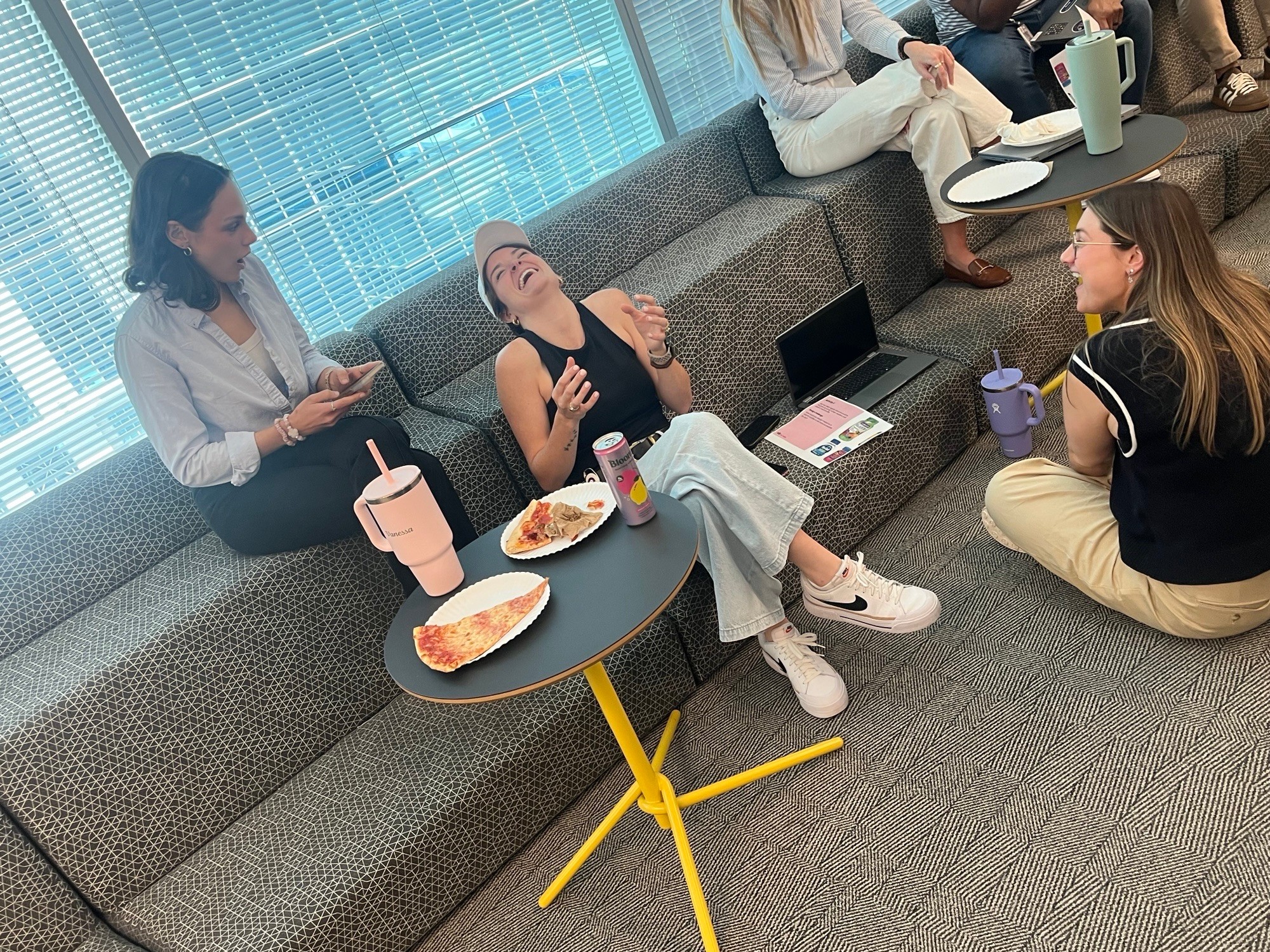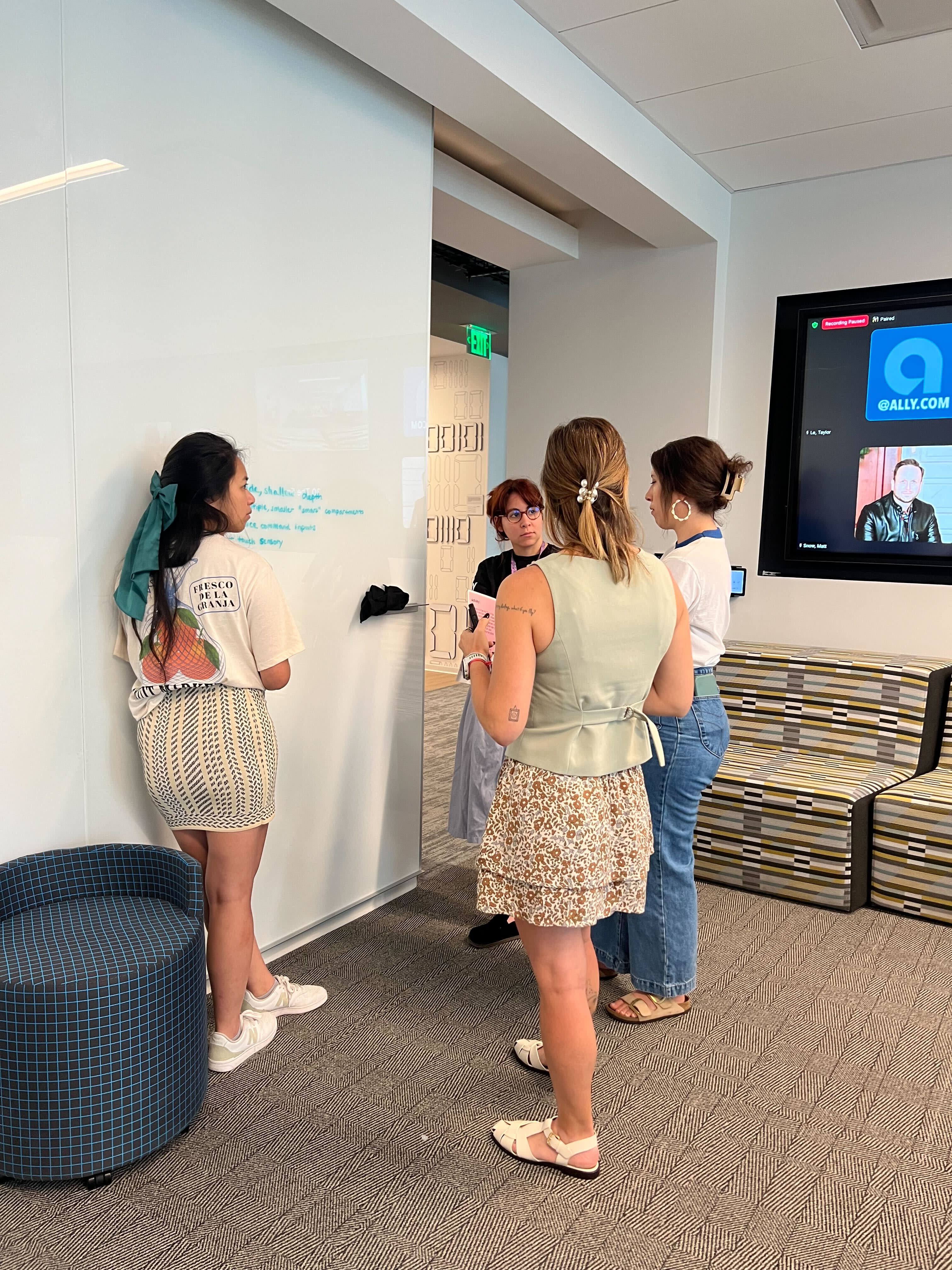Reflections from Our Latest GAAD: Banking by Design—How UI/UX and Development Teams Collaborate on Accessible Experiences
- Annabel Weiner, Matt Snow , & Sabrena Foxx
- 4 min read
Accessibility is more than a nice to have; it should be a fundamental right that ensures inclusivity for all users, including those with disabilities. In today's evolving digital landscape, education plays a pivotal role in empowering teammates to create processes to allow accessibility into their day to day responsibilities. Engaging with people with disabilities highlights the importance of creating user experiences for every consumer that goes beyond compliance with guidelines. One of the ways Ally drives education around accessibility and disability is by celebrating Global Accessibility Awareness Day which took place on May 15, 2025. As we reflect on Ally’s 8th annual celebration of GAAD, we wanted to take a moment to share personal reflections from colleagues across the company to share how far we've come—and where we can continue to go—when it comes to creating accessible digital experiences in the banking sector.
GAAD, which was inspired by a pivotal blog post by Los Angeles-based web developer Joe Devon, has been a driving force in raising awareness about digital accessibility. Ally hosted company-wide GAAD events underscoring our commitment to digital accessibility beyond compliance requirements with Web Content Accessibility Guidelines (WCAG). During our week-long lead up to GAAD, we hosted a panel about Crafting, Performing, and Consuming Audio Description for TV and movies, which is a method to describe non-verbal action on screen for blind and low-vision viewers. It’s an important way to make video media accessible. We also held a session around mobile app accessibility for our engineers, and a workshop about accessibility in everyday products. Our goal is for these events to inspire and drive creativity in our teammates about how we can create new processes to allow more incorporate more inclusive practices into our work at Ally.
The heart of our accessibility efforts are meaningful collaborations between our UX designers, product management, and development teams. As Annabel Weiner, our UX Accessibility Manager, insightfully puts it, "A key part of our accessibility strategy is making sure our digital teams are incorporating accessibility early on in a project, and throughout the design and development cycle. Making sure we’re providing education around disability and accessibility is crucial, so our teammates understand the importance and the why behind accessibility requirements.”
Our commitment to digital accessibility is further strengthened by the insights gained from working directly with people with disabilities (PWD). As Weiner reflects, "As I’ve participated in more usability research with people with disabilities, I’ve learned that as much as we can know and understand WCAG guidelines, we can never replace getting feedback from PWD." This first-hand feedback is invaluable, driving a deeper understanding of why this is important and how our design decisions impact our users.
The evolving landscape of digital accessibility also plays a crucial role in shaping our approach. As Sabrena Foxx, Senior Director of Accessibility, at Ally observes, "The landscape of digital accessibility has evolved significantly in recent years, driven by both regulatory pressures and a growing recognition of the importance of inclusivity." This evolution has shifted digital accessibility from being a mere differentiator to a fundamental expectation. Foxx draws from her experience working with Metrolina Association for the Blind, a Charlotte-based non-profit that has shaped her approach to digital accessibility. “My work with the Metrolina Association for the Blind has clearly been transformative in deepening my understanding of digital accessibility. Working closely with individuals who live and breathe accessibility every day shifted my focus from a purely technical perspective to a more user-centric one.”
For those looking to embark on their own accessibility journey, remember that it's about more than just adhering to guidelines. As Taylor Le, our Accessibility Testing Specialist, advises, "Digital accessibility is more than conformance to a set of rules or laws - it is about advocating for a digital experience that can be enjoyed and used by everyone!"

Wrapping up
Accessibility is a shared responsibility.
Accessibility isn't just the responsibility of one team—it's a shared commitment across all disciplines, requiring awareness, leadership, and proactive accountability at each stage of the product pipeline. At Ally, we strive to integrate accessibility into our daily work through collaborative efforts between developers, testers, product owners, and UX teams. We know that every decision we make can shape how well our customers, especially those with disabilities, succeed in managing their finances. Leveraging our accessibility tools such as first-hand research with people with disabilities, automated and manual testing, role specific training, awareness events featuring speakers with disabilities and advocating for inclusion in leadership conversations, push us to ensure our customers with disabilities are empowered with their digital banking.
For more information about Ally’s commitment to inclusion and accessibility, visit Our Approach to Accessibility.
We’re proud of our commitment to accessibility, but we’re always looking for ways to improve. If you have any ideas — or experience any issues — tell us about it.
 Interested in joining Ally's team of talented technologists to make a difference for our customers and communities? Check outAlly Careersto learn more.
Interested in joining Ally's team of talented technologists to make a difference for our customers and communities? Check outAlly Careersto learn more.